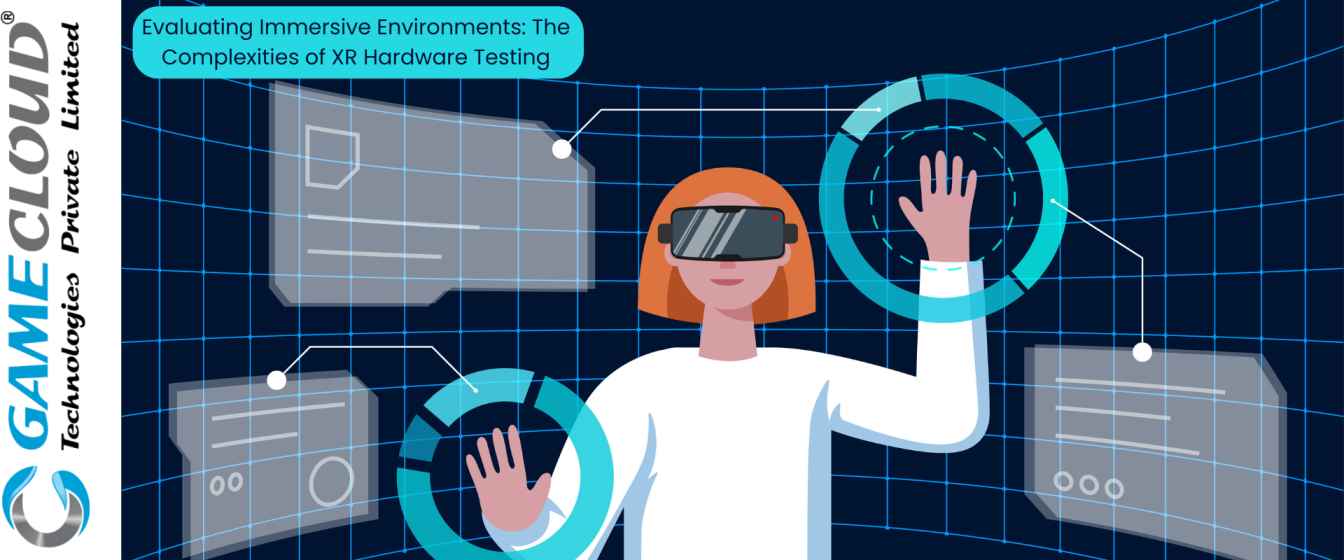
XR encompasses immersive technologies like VR, AR, and MR, creating new ways for users to interact with digital content. This technology enables full virtual immersion, overlays of digital information onto the physical world, or a blend of both. XR has transformed industries such as healthcare, education, and retail by enabling realistic simulations, interactive learning, and “try-before-you-buy” shopping experiences. As XR becomes more prevalent, rigorous hardware testing is essential to deliver reliable, user-friendly experiences. Testing ensures smooth functionality and helps overcome common issues like lag and motion sickness, critical for enhancing user satisfaction and engagement.
Understanding the Testing Landscape in XR Hardware
Testing XR hardware presents unique challenges due to the distinct demands of VR, AR, and MR devices. Each XR type requires specific tracking, display quality, and sensor calibration standards. For instance, VR headsets focus on high immersion, needing precise frame rates and minimal latency to avoid motion sickness. AR systems, often used in real-world settings, emphasize accurate overlay of digital content, relying on advanced spatial and temporal tracking like SLAM (Simultaneous Localization and Mapping) to maintain stability and reduce image drift. MR combines elements of both, adding complexity as it merges interactive holograms with physical surroundings.
Core testing parameters in XR include frame rate stability, latency, and field-of-view measurements. Ensuring user comfort and safety is critical, particularly as issues like eye strain and motion sickness are prevalent without rigorous testing. Environmental factors like lighting, temperature, and spatial setup also impact usability, making extensive calibration essential to deliver a high-quality, reliable XR experience.
Advanced Testing Techniques and Tools for XR Hardware
Testing XR hardware requires a blend of simulation, real-world assessment, and innovative tools to address the complexities of immersive environments. Controlled lab environments allow for precise, repeatable tests under various lighting and spatial conditions, while real-world testing checks device adaptability in diverse settings. Usability testing with real users helps identify issues with intuitiveness, response times, and user comfort, a critical factor as XR devices aim for high user immersion.
AI-driven automation enhances testing efficiency by simulating various scenarios quickly, identifying performance bottlenecks, and standardizing reliability checks. Tools like Arium by Thoughtworks allow automation across XR-specific platforms, enabling functional and performance testing in controlled and customizable environments. Additionally, frameworks such as BlueICE offer ultra-realistic simulation to test responses to different conditions, aiding in reducing cost and increasing accuracy by automating repetitive tasks with high precision.
The convergence of AI, simulation, and automation in XR testing is transforming the process, making it faster, more accurate, and adaptable to the rapid development of XR hardware.
QualityReality: Elevating XR Experiences Through Expert Testing Solutions
At QualityReality, the XR focused arm of GameCloud Technologies Private Limited, we focus on delivering top-notch testing solutions for XR and Metaverse applications. Our expertise ranges from testing functionality and performance to user experience across various platforms and devices. We prioritize ensuring your XR products are functional, compatible, and perform smoothly for an optimal user experience. With our state-of-the-art tools and a dedicated team, we aim to help developers create immersive, user-friendly, and high-performing XR experiences. QualityReality is committed to meeting the high standards required for the next generation of immersive digital content.
Conclusion
Comprehensive testing is crucial for XR hardware to ensure reliable, immersive user experiences. As XR technology progresses, testing methods must evolve to address emerging complexities and meet rising user expectations. By continually adapting, testing can effectively support XR’s potential across industries, ensuring high-quality, future-ready devices and environments.
For Know More Contact-Now
FAQs for “Evaluating Immersive Environments: The Complexities of XR Hardware Testing”
What makes XR hardware testing different from traditional hardware testing?
XR hardware testing is distinct because it involves technologies like VR, AR, and MR, each with specific requirements for tracking, display quality, and sensor calibration. Unlike traditional hardware, XR devices demand precise frame rates, low latency, and advanced spatial tracking to ensure smooth, immersive experiences. Testing also needs to account for factors like motion sickness, eye strain, and environmental conditions, which are less of a concern in conventional hardware testing.
Why is latency and frame rate stability critical in XR hardware testing?
Latency and frame rate stability are essential in XR hardware to ensure a smooth, immersive experience. In VR, for instance, high latency or unstable frame rates can cause motion sickness or discomfort, disrupting user immersion. Similarly, AR devices rely on precise tracking to align digital content with the real world, and any delay or instability can lead to disorientation or a poor user experience. Therefore, consistent frame rates and low latency are vital for user comfort and engagement.
What role does environmental testing play in XR hardware testing?
Environmental factors such as lighting, temperature, and spatial setup play a crucial role in XR hardware testing. XR devices often rely on sensors that interact with the physical world, making them sensitive to these conditions. Testing in controlled lab environments ensures that devices perform optimally under various conditions, while real-world testing assesses how the hardware adapts to different environments. Proper environmental testing ensures the device remains reliable and functional, no matter where it’s used.
How does AI-driven automation improve XR hardware testing?
AI-driven automation enhances XR hardware testing by speeding up the process and increasing accuracy. It allows testers to simulate a wide range of scenarios quickly, identify potential performance bottlenecks, and automate repetitive tasks with high precision. This efficiency reduces the cost and time required for testing, allowing for more comprehensive and accurate results. Tools like Arium by Thoughtworks and BlueICE offer advanced automation for testing XR hardware in customized, repeatable environments.
How can QualityReality help developers with XR hardware testing?
QualityReality, the XR-focused division of GameCloud Technologies, offers comprehensive testing solutions for XR and Metaverse applications. With expertise in testing functionality, performance, and user experience, QualityReality ensures that XR products are optimized for smooth performance across platforms. By utilizing state-of-the-art tools and a dedicated team, QualityReality helps developers create immersive, user-friendly, and high-performing XR experiences that meet industry standards.
